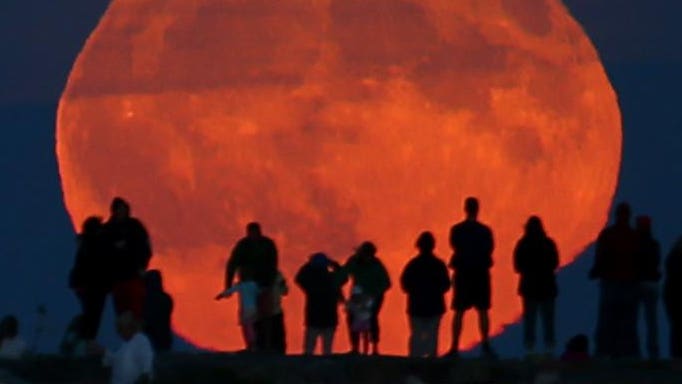The moon is in a slight time-warp, but there’s no need to panic. It’s just the reason for the seasons.
Our natural satellite rises 50 minutes later each night. If that’s a bombshell, it shouldn’t be. A day lasts 24 hours and the moon orbits Earth every 29 days. It’s simple math, but it breaks down this week as the full “Harvest Moon” rises at much shorter intervals.
Take New York City at 41º North. The moon rose at 17:41 on Wednesday will do so at 18:09 on Thursday, 18:35 on Friday, 19:00 on Saturday and 19:25 on Sunday. That’s just 25 minutes later each night.
At more northerly latitudes the difference is much more pronounced, with London in the U.K.—at 51º North—with moonrise times of 18:10, 18:27, 18:41, 18:54 and 19:08 for the same days. That’s as little as 13 minutes difference.
What’s going on?
Cue The ‘Harvest Moon’
It’s all down to the “Harvest Moon,” which will be best seen at moonrise on Thursday this week. In fact, the weird rising times of the moon at this time of year in the northern hemisphere is the reason the “Harvest Moon” gets that name.
The cause is Earth’s axial tilt just after the September equinox—which occurred earlier this week—according to Timeanddate.com. “At the September equinox, the North Pole is tilted away from the moon during the First Quarter Moon phase and toward the moon during the Third Quarter,” writes the website’s astronomer Konstantin Bikos.
Northern Light
For northern hemisphere dwellers, the moon therefore goes from rising unusually late (and setting early) at the First Quarter to rising unusually early (and setting late) at the Third Quarter, he explains.
Since the Harvest Moon is midpoint between those two extremes, the moon rises at unusually short intervals.
The Harvest Moon is always the closest moon to the equinox. It gets its name because the short intervals between rising times means farmer’s fields are illuminated by moonlight for successive nights for the only time during the northern hemisphere’s year.
This year September’s full moon is also a “supermoon”—the final such moon of 2023—which will add a little extra brightness.
Wishing you clear skies and wide eyes.
Read the full article here










